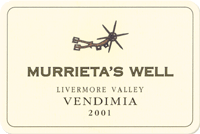 |
|
Wine Details
Price:
Description:
A rich white wine, this blend is impressively balanced with good acidity and a long, lingering finish. Honey, melon, and fig aromas stand out with a nice floral and orange note from the Malvasia and the Orange Muscat. On the mouth, flavors of pears and cloves are handsomely framed by vanilla and oak nuances from barrel fermentation and sur lie aging.
|
|
|